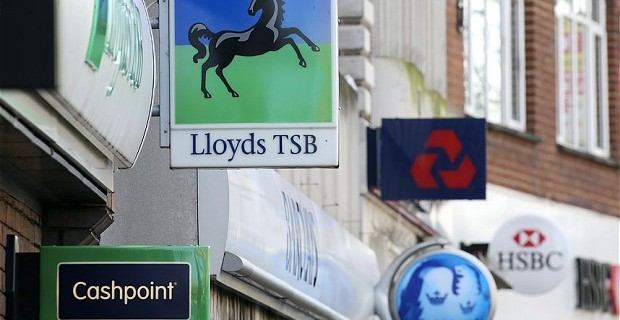New EU Bank-Creditor Loss Rules Leave Room for Confusion

The European Union has served notice that senior bondholders will be in the firing line for losses when banks go bust, yet the law’s fine print leaves room for confusion.
Policy makers from Michel Barnier to Jeroen Dijsselbloem have heralded legislation published yesterday as an iron-clad system for shifting the burden of bank failures from taxpayers to investors. In time of crisis, the directive’s exemptions and caveats will give regulators plenty of wiggle room.
“The text itself is full of loopholes,” said Nicolas Veron, a fellow at the Bruegel research group in Brussels. “Even if it wasn’t, it would still take time for the practical application of the law to bed down. Each of these two levels is sufficient to raise doubts about how the framework will really play out. As a famous general said, no plan survives first contact with the enemy.”
Under the new rules set out in the Bank Recovery and Resolution Directive or BRRD, starting in 2016 authorities will, as a general rule, require 8 percent of a struggling bank’s liabilities to be wiped out before recourse can be made to industry funds or taxpayer support.
Ordinary shareholders would face losses first. If that’s not enough, holders of other instruments that count as capital, such as preferred shares and junior bonds, and then senior unsecured creditors would be targeted.
Bank Depositors
Creditors will be protected from suffering losses heavier than those they would have incurred had the bank been put through normal insolvency proceedings. Special arrangements would apply for bank depositors, with holdings of as much as 100,000 euros ($136,000) shielded from writedowns.
Barnier, the EU’s financial services chief, has said that the BRRD is the cornerstone of the EU’s response to the 1.5 trillion euros of taxpayer money governments made available to prop up their banks between 2008 and 2012.
“The new EU rules are one of the world’s toughest in terms of imposing losses on banks’ shareholders and creditors,” Barnier said last month. “This is not business as usual; this is a new world of dealing with failing banks.”
The legislation interlocks with other post-crisis laws published yesterday, including a toughening of rules on national guarantees for bank deposits and stricter regulation of traders. The measures also underpin a push by the euro area to centralize the handling of failing banks by establishing a central resolution authority backed by a joint industry-financed 55 billion-euro fund.
‘Degree of Uncertainty’
“Unfortunately both for the institutions concerned and the broader needs of a fully functioning financial system, a considerable degree of uncertainty will persist,” Richard Reid, a research fellow for finance and regulation at the University of Dundee in Scotland, said by e-mail. “Experience has taught us that when rules such as these are put to the test, it is seldom as straightforward as planned.”
While the message from governments and regulators is clear-cut, the BRRD itself is nuanced. For example, the law allows nations some scope to provide so-called precautionary aid to banks without triggering a risk of senior bondholder losses. Such aid could be applied in cases where a bank is found in a stress test to need more capital.
Regulators can also grant exceptions from forced losses if they considered that writing down a class of securities would do more harm than good.
Bankruptcy Procedure
Limits here would include that exemptions for some creditors shouldn’t lead to writedowns for others that go beyond the losses they would have faced if the bank went through a traditional bankruptcy procedure. The European Commission would also have powers to vet such carve-outs.
When exemptions are used, the EU’s state-aid rules, which require bail-ins of junior creditors before public money is used, would still apply.
“The risk for senior bondholders has very much increased,” said Carola Schuler, a managing director for Moody’s Investors Service in Frankfurt. “Still, the law is drafted in a way which means that, within certain parameters, certain conditions, the governments could still step in.”
Moody’s said last month that the legislation, with its “explicit inclusion” of writedowns of senior unsecured creditors, had prompted it to place 82 European banks on a negative ratings outlook.
The application of the rules will need to be kept under review, Moody’s said, as it left “some latitude for authorities” to avoid bailing-in senior creditors when this would threaten financial stability.
Debt Crisis
“The directive includes several carve-outs that leave open the possibility to implement a resolution that includes support for creditors,” Schuler said. “We don’t have full clarity yet on what this means in practice.”
The approach to distressed banks has varied since the crisis erupted in 2008, with seniors spared at nationalized SNS Reaal NV in Netherlands and at Irish banks, while being targeted as part of the euro area’s bailout of Cyprus in 2013. Seniors also took at hit when two Danish banks failed in 2011 and were processed under national resolution rules.
While the law does contain some flexibility, there are forces that will limit how far any exemptions are applied in practice, Pierre-Henri Conac, a professor of financial-markets law at the University of Luxembourg, said by e-mail.
‘Game Changer’
The “political acceptability” of bailouts is very low in Europe, “and this will only get worse for the banks,” Conac said. Also, the cost of taxpayer rescues and the threat that they could “put the sovereign at risk” acts as a constraint, he said. The law is “a real game changer.”
Europe “is definitely making progress towards more market discipline for banks, but it can’t claim yet that it is in a steady state regime with total predictability. We are far from the end of that journey of discovery,” Veron said.
Uncertainty over how some aspects of how the law will play out in practice “shouldn’t detract from the fact that the Europeans have covered an enormous amount of ground, and made tremendous progress, in the last two years,” he said. “They have shifted from a ’no creditor left behind’ doctrine to a doctrine of bail-in that has some bite.”
In addition to possible loopholes in the rules, seniors are also protected by banks’ growing cushions of capital and junior debt.
Balance Sheets
Banks “are issuing less unsecured senior debt as they focus on increasing deposits and shrinking balance sheets. Its importance is waning,” said Steve Hussey, an analyst at AllianceBernstein Ltd. in London, which manages about $445 billion.“They are also taking big strides to increase the size of their cushions of equity capital, Additional Tier 1 instruments like CoCo bonds and subordinated debt that would offer a buffer to senior creditors from losses in a crisis.”
Since 2009, banks including Barclays Plc (BARC), Lloyds Banking Group Plc, and UBS AG have issues CoCos, a term used to describe bonds that are specifically designed to convert into ordinary shares when a bank’s capital, a measure of the state of its finances, breaches a pre-agreed level.
“Given these changes, you would need to have a massive overnight event, a Kerviel, plus a London Whale, plus more besides, to get to a point where senior unsecured debt might be taking a loss,” Hussey said, in reference to trading scandals that have hit Societe Generale SA (GLE) and JPMorgan Chase and Co.
Source: bloomberg
Related Posts
 Greek government takes aim at creditors over stalled bailout talks
Greek government takes aim at creditors over stalled bailout talks Banks Finalize $1.86 Billion Credit-Swaps Settlement
Banks Finalize $1.86 Billion Credit-Swaps Settlement Banks’ Civil Forex Settlements Near $2 Billion
Banks’ Civil Forex Settlements Near $2 Billion Stournaras: Bank of Greece had built defense against plans for parallel currency
Stournaras: Bank of Greece had built defense against plans for parallel currency Hanjin Shipping Trading Halted After Plunge to Six-Year Low
Hanjin Shipping Trading Halted After Plunge to Six-Year Low
























